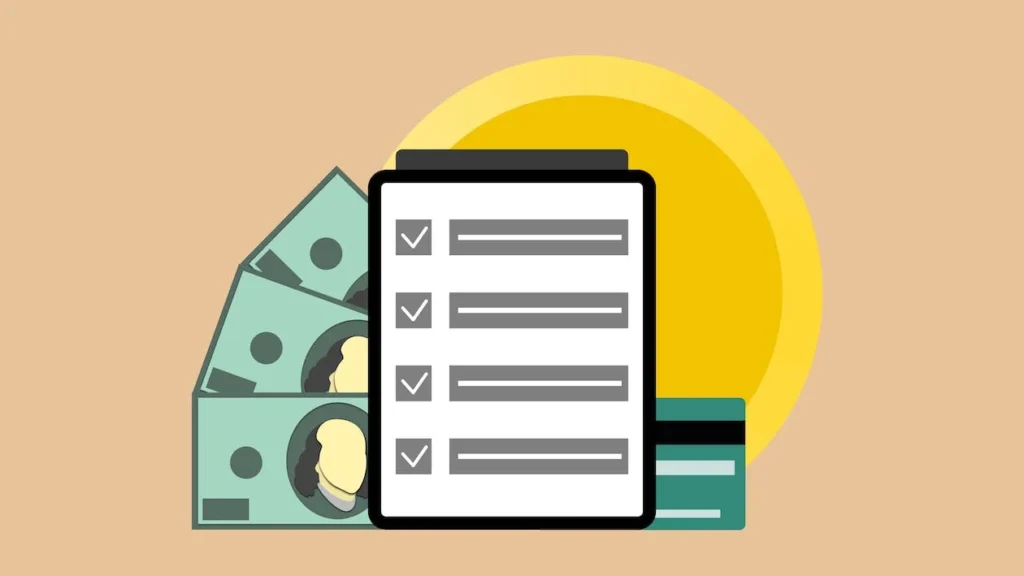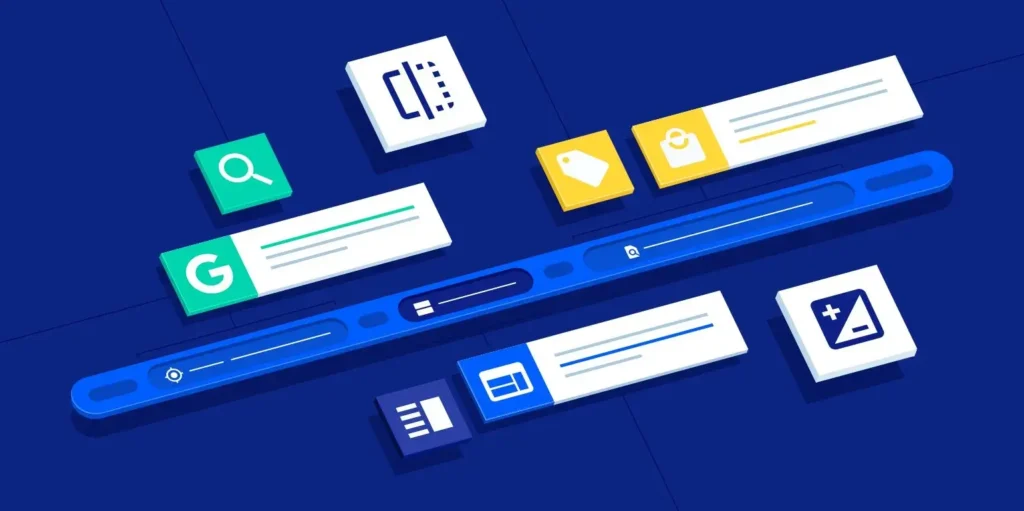(This Article has been revised, edited and added to, by Poulomi Chakraborty.)
The SaaS industry has experienced explosive growth over the past few years, with companies of all sizes flocking to cloud-based solutions for their business needs. One of the most critical pages on any SaaS website is the pricing page. It’s not just about presenting numbers but effectively communicating the value, leading to conversion. In this comprehensive guide, we’ll delve into the nuances of optimizing your SaaS pricing page for both conversions and search engine visibility.
Understanding the Importance of the Pricing Page

The pricing page of a SaaS website is not just a list of numbers; it’s a critical communication tool that bridges the gap between consumer curiosity and commitment. This section aims to provide startup founders with deep insights and strategic guidance on maximizing the effectiveness of their pricing page, beyond the essentials of clarity, trust-building, conversions, and SEO significance.
The Psychology Behind Pricing Perception
When visitors land on your pricing page, they’re not just looking at figures; they’re experiencing an emotional and psychological response. The way you present your pricing can significantly influence their perception of your product’s value. It’s crucial to understand the psychological triggers that can make your pricing more appealing. Concepts such as the charm pricing effect, where prices ending in “.99” are perceived as significantly lower than they actually are, or the use of round numbers for premium plans to convey simplicity and confidence, can subtly influence decision-making processes.
Strategic Positioning of Pricing Tiers
The structure and presentation of your pricing tiers play a crucial role in guiding potential customers towards the decision you want them to make. Beyond highlighting the most popular or recommended plan, consider the strategic use of anchoring. By positioning a high-value option first, you can set a psychological anchor that makes the subsequent options seem more reasonably priced. This tactic leverages the contrast effect, where the first price seen serves as a reference point for the rest.
Integrating the Pricing Page into the Customer Journey
Understanding the customer journey is vital in optimizing the pricing page. Consider how customers arrive at your pricing page and where they are in their decision-making process. Are they coming from a detailed feature page, a blog post, or a direct search? Tailoring the messaging on your pricing page to fit the context of their journey can increase relevance and conversion. For instance, if they’ve arrived from an in-depth article about a specific feature, your pricing page could highlight how each plan supports that feature.
Behavioral Economics and Price Presentation
The principles of behavioral economics offer valuable insights into how consumers make choices. Framing effects, for example, can significantly impact how offers are perceived. Presenting your pricing in a way that emphasizes gains (what users will achieve or receive) rather than losses (what they will pay) can lead to more positive outcomes. Additionally, the decoy effect can be used to strategically structure pricing tiers, where adding a third, less attractive option makes the target plan more appealing.
Dynamic Pricing and Personalization
In the era of big data and AI, dynamic pricing strategies can offer a competitive edge. Adjusting pricing based on market demand, user behavior, or purchase history can not only maximize revenue but also provide a personalized experience. For SaaS startups, implementing a level of pricing personalization—such as offering special discounts or added value to repeat visitors or those coming from specific referral sources—can enhance perceived value and loyalty.
The Role of A/B Testing
The pricing page is an ideal candidate for A/B testing, given its direct impact on revenue. Experimenting with different layouts, pricing structures, messaging, and calls to action can provide valuable insights into what resonates best with your audience. This iterative process is crucial for refining your approach based on real user data, ensuring that your pricing page is continuously optimized for both conversion and user experience.
Continuous Evolution and Feedback Loops
The digital landscape and consumer expectations are always evolving, making it necessary for your pricing page to adapt continually. Establishing feedback loops through user surveys, feedback tools, and analytics will help you understand how changes in the market or your product offering affect the efficacy of your pricing page. This ongoing cycle of feedback, analysis, and adjustment is key to maintaining a pricing strategy that aligns with both your business goals and your customers’ needs.

Related: Check out our free SEO suite

Conversion-centric Strategies for Pricing Pages
The transformation of a pricing page into a conversion powerhouse requires a nuanced approach that goes beyond the basics of clear pricing and highlighted plans. This section delves into sophisticated strategies designed to maximize the conversion potential of SaaS pricing pages.
Leveraging Psychological Pricing Techniques
Psychological pricing extends beyond charm pricing and round numbers. Implementing tiered pricing strategies that cater to different psychological triggers can significantly impact decision-making. For example, utilizing the power of “9” in pricing can make a product seem more affordable, while anchoring your highest-priced plan first can make subsequent plans seem more accessible. Furthermore, presenting your pricing against higher-priced competitors can subtly position your product as offering better value.
Personalization and Behavioral Targeting
Personalizing the pricing page experience can dramatically increase conversions. By analyzing user behavior, such as the features they’ve shown interest in or the content they’ve engaged with, you can dynamically adjust the pricing page to highlight the most relevant plan for them. This level of personalization makes the decision-making process easier for potential customers by directly addressing their specific needs and reducing choice overload.
Optimal Use of Social Proof
Beyond displaying logos and testimonials, the strategic placement and selection of social proof elements can enhance their effectiveness. Including short, impactful customer quotes that speak directly to the benefits of your service can resonate more with potential customers. Additionally, showcasing case studies or success stories relevant to the visitor’s industry or use case on the pricing page can create a stronger connection and reduce purchase hesitancy.
Enhancing Perceived Value Through Bundling
The concept of bundling, or offering combined packages of products or services at a reduced price, can significantly enhance the perceived value of your offerings. This strategy not only encourages higher-tier selections but can also introduce users to additional features or services they might not have initially considered. The key is to create bundles that are perceived as greater in value than the sum of their parts, encouraging upgrades and increasing customer satisfaction.
Creating a Sense of Urgency
Incorporating elements that create a sense of urgency can motivate potential customers to make a decision more quickly. Limited-time offers, countdown timers for special pricing, or exclusive bonuses for early sign-ups can compel users to act. This tactic should be used sparingly and authentically to avoid diminishing trust.
Simplifying the Decision-Making Process
The complexity of choice can be a significant barrier to conversion. Simplifying the decision-making process involves more than just reducing the number of options; it requires a thoughtful presentation of information that guides the user to an informed decision. This can include comparison charts that clearly delineate the differences between plans, emphasizing the best value plan, and providing clear recommendations for different user segments.
Continuous Optimization Through User Feedback
Gathering and acting on user feedback is essential for refining your pricing strategy. Direct feedback, heatmaps, and analytics can reveal where users are getting stuck or dropping off. This insight allows for targeted improvements, such as adjusting the placement of key elements, clarifying messaging, or even reevaluating your pricing structure. Engaging with users through surveys or feedback tools directly on the pricing page can also provide valuable insights for ongoing optimization.
Integrating Interactive Elements
Interactive elements like sliders or calculators allow users to customize their view of your pricing based on their specific needs, such as the number of users, the volume of data, or the duration of subscription. This interactivity not only aids in personalizing the experience but also engages the user, making them an active participant in their decision-making process. By enabling potential customers to tailor the pricing information to their exact requirements, you can significantly enhance the perceived value and relevance of your offerings, thereby increasing the likelihood of conversion.
SEO Strategies for Pricing Pages

In the realm of SaaS, where competition is fierce, a well-optimized pricing page can serve as a significant differentiator. This section is dedicated to exploring deeper into SEO strategies that can enhance the visibility and ranking of your SaaS pricing page, ensuring it reaches its intended audience effectively.
Crafting Compelling Content Beyond Pricing
While the primary focus of the pricing page is to list the costs and features of different plans, enriching this page with valuable content can significantly improve its SEO performance. This involves integrating detailed descriptions of each plan, including how they cater to different user needs or business sizes. Moreover, incorporating success stories or case studies related to each pricing tier can provide context and demonstrate real-world value, making the content both richer and more engaging for search engines and users alike.
Optimizing for Long-tail Keywords
Long-tail keywords are more specific and less common than typical keywords but can drive highly targeted traffic to your pricing page. By conducting thorough research to understand the exact queries your potential customers are using, you can tailor your page content to include these long-tail phrases. For example, targeting phrases like “affordable CRM software for small businesses” can attract visitors who are in the later stages of the decision-making process and more likely to convert.
Enhancing Visibility with Video Content
Video content is not only engaging but also beneficial for SEO. Creating video walkthroughs of your software’s features, benefits, and the value proposition of different pricing tiers can keep visitors on your page longer, which is a positive signal to search engines. Additionally, these videos can be indexed separately in video search results, opening up another channel through which potential customers can discover your pricing page.
Leveraging the Power of Backlinks
Backlinks, or links from other websites to your pricing page, are a critical factor in SEO. They signal to search engines that others find your content valuable and authoritative. To build backlinks, consider guest blogging on reputable industry sites, participating in webinars, or creating shareable content that naturally encourages others to link to your pricing page. Remember, the quality of backlinks is far more important than quantity, so focus on building relationships with reputable industry leaders and platforms.
Implementing Advanced Schema Markup
While basic schema markup helps search engines understand the content of your page, advanced implementation can enhance how your pricing information is displayed in search results. Using specific Product and Offer schema types allows for the detailed representation of your offerings directly in SERPs, including pricing, availability, and ratings. This not only improves visibility but also makes your listing more attractive to users, potentially increasing click-through rates.
Ensuring Mobile-Friendliness and Page Speed
With the majority of searches now performed on mobile devices, the mobile-friendliness of your pricing page is non-negotiable. A responsive design ensures that the page displays correctly on all devices, while fast loading times are critical for keeping the user’s attention. Utilize Google’s mobile-friendly test and PageSpeed Insights tool to identify and rectify any issues that could be hindering your page’s performance.
Localizing Content for Global Audiences
For SaaS companies serving international markets, localizing your pricing page can significantly impact its effectiveness and SEO. This means more than just translating the text; it involves adjusting your pricing models to reflect local currencies, payment methods, and even cultural nuances. Implementing hreflang tags ensures search engines present the correct language version to users, improving user experience and engagement.
Continuous Monitoring and Optimization
SEO is not a set-and-forget process. Continuous monitoring using tools like Google Analytics and Search Console is essential to understand how your pricing page performs over time. This includes tracking rankings for targeted keywords, analyzing user behavior on the page, and identifying opportunities for further optimization. Regular updates based on these insights can help you maintain and improve your page’s SEO standing, ensuring it remains competitive and visible to your target audience.
Optimizing for Mobile Users

With the increasing prevalence of mobile browsing, ensuring your SaaS pricing page is optimized for mobile users is not just beneficial—it’s essential. This section will explore advanced strategies for optimizing your pricing page for mobile users, focusing on enhancing user experience, improving load times, and ultimately driving conversions from mobile visitors.
Emphasizing Speed and Simplicity
Mobile users expect quick access to information without the need to navigate through complex layouts or wait for slow-loading pages. Ensuring your pricing page loads swiftly and presents information in a clear, straightforward manner is paramount. This includes optimizing images, leveraging browser caching, and minifying CSS and JavaScript files to reduce load times. Moreover, simplifying the design to focus on key elements, such as plan options and call-to-action buttons, can prevent users from feeling overwhelmed and encourage them to take the next step.
Adapting Content for Mobile Consumption
Content on a mobile pricing page needs to be concise yet comprehensive enough to enable informed decision-making. This involves prioritizing content that directly supports conversion goals, such as plan benefits and pricing details, and making secondary information accessible through expandable sections or links to other pages. The use of headings, bullet points, and ample white space can also enhance readability on small screens, making it easier for users to scan through the options and make a selection.
Streamlining Navigation for Efficiency
Mobile users should be able to navigate your pricing page with ease, moving seamlessly between different sections or back to other areas of your site without frustration. Implementing a sticky header with a dropdown menu or direct links to other relevant pages can significantly enhance navigation efficiency. Additionally, ensuring that the pricing page is easily accessible from anywhere on your site with minimal clicks is crucial for keeping mobile users engaged and moving towards conversion.
Enhancing Interactivity and Engagement
Interactive elements, such as sliders to adjust the number of users or toggles to switch between monthly and annual pricing, can greatly improve the mobile user experience by providing a more engaging and personalized way to view pricing information. These elements should be designed with mobile touch interactions in mind, featuring large touch targets and smooth animations to ensure usability and responsiveness. Engaging users in this manner not only makes the pricing information more relatable but also increases the time spent on the page, positively influencing conversion rates.
Incorporating Mobile-Specific Features
Taking advantage of mobile-specific features, such as click-to-call buttons for contacting sales or support, can enhance the functionality of your pricing page on mobile devices. For SaaS companies with mobile applications, providing a direct link to download the app can also be a strategic move, especially if the app offers additional functionalities or an enhanced user experience compared to the mobile web version. These mobile-specific features can provide added convenience for users, making it easier for them to take the next steps or get in touch with your team.
Prioritizing Accessibility
Ensuring your pricing page is accessible to all users, including those with disabilities, is not only a matter of inclusivity but also expands your potential audience. This includes using proper contrast ratios for text and background colors, providing alt text for images, and ensuring interactive elements are accessible via screen readers and keyboard navigation. Improving accessibility can significantly enhance the mobile experience for a broad range of users, contributing to higher satisfaction and conversion rates.
Leveraging Local Optimization
For SaaS businesses targeting multiple regions, localizing the mobile pricing page can provide a significant advantage. This includes displaying pricing in local currencies, using local language and terminology, and even customizing the page based on local market preferences or legal requirements. Local optimization can make the pricing page more relevant and appealing to users from different regions, improving the likelihood of conversion.
By implementing these advanced strategies, startup founders can ensure their SaaS pricing page is not only optimized for mobile users in terms of speed and usability but also tailored to meet the unique needs and expectations of a mobile audience. This holistic approach to mobile optimization is essential for capturing the growing segment of users who rely on their mobile devices for research and decision-making, ultimately driving more conversions and enhancing the overall success of your SaaS offering.
User Experience (UX) and its Impact on Conversions

In the digital ecosystem, where the competition is just a click away, the user experience (UX) of your pricing page can significantly influence the decision-making process of potential customers. This section delves into advanced UX strategies that can help startup founders optimize their SaaS pricing pages, not just for aesthetics but for conversions and customer satisfaction.
Crafting an Intuitive Pricing Structure
An intuitive pricing structure goes beyond mere simplicity. It involves designing a pricing model that aligns with user expectations, making it effortless for them to find and select the most suitable plan. This can be achieved by categorizing plans based on user types or use cases, rather than features alone, which can often be overwhelming. Presenting your pricing in a way that mirrors the thought process of the buyer can significantly reduce cognitive load and decision fatigue, leading to a smoother path to purchase.
Implementing Progressive Disclosure
Progressive disclosure is a technique used to present information to the user gradually, as and when they need it. This approach is particularly effective on pricing pages, where too much information can be overwhelming. By initially showcasing only the most critical information about each plan and providing options to “Learn More” about each tier, users can navigate the amount of detail that suits their stage in the decision-making process. This method keeps the page clean and focused while still offering all the necessary details to those who seek them.
Optimizing Visual Hierarchy
The visual hierarchy on your pricing page plays a pivotal role in guiding users’ attention to the most important elements. Utilizing size, color, contrast, and placement can help highlight key aspects, such as the value proposition of each plan and the call to action. For instance, making the most popular or value-efficient plan stand out with a distinct color or border can draw attention to it, subtly guiding users towards a decision. Similarly, ensuring that CTAs are prominently placed and visually appealing can increase their effectiveness.
Enhancing Interactive Elements for Better Engagement
Interactive elements, when used judiciously, can transform the user experience on pricing pages from static to engaging. Tools like price calculators, which allow users to dynamically see how changes in their needs (e.g., number of users, data usage) affect pricing, not only aid in personalization but also engage users in a way that static information cannot. These elements should be designed with usability in mind, ensuring they are easy to use on both desktop and mobile devices.
Utilizing White Space for Clarity
The strategic use of white space, or negative space, around text and features can significantly improve the readability and overall appearance of your pricing page. White space helps to reduce cognitive overload by making the content more digestible. It allows users to focus on the key elements without distraction, leading to a cleaner, more elegant design that enhances the user’s ability to make informed decisions.
Incorporating User Feedback in Real-Time
Embedding mechanisms for collecting user feedback directly on the pricing page can provide invaluable insights into the user experience. This feedback can be used to make immediate improvements and address any areas of confusion or concern. Whether it’s through simple surveys, feedback forms, or chatbots, giving users a voice can not only improve the UX but also build trust and loyalty.
Analyzing Behavioral Data for Continuous Improvement
Leveraging analytics tools to monitor how users interact with your pricing page can reveal a wealth of insights into their behavior, preferences, and potential bottlenecks. Heatmaps, scroll depth analysis, and click tracking can identify which elements are attracting the most attention and where users are dropping off. This data is crucial for iterative design improvements, allowing for a user experience that is continuously refined based on actual user behavior and preferences.
By focusing on these advanced UX strategies, startup founders can ensure their SaaS pricing page not only meets but exceeds user expectations, leading to higher satisfaction, increased conversions, and a competitive edge in the market. Understanding and addressing the nuances of how users interact with your pricing page can make the difference between a page that merely informs and one that converts.
Advanced SEO Techniques for Pricing Pages

To stand out in the crowded digital landscape, SaaS companies must employ advanced SEO techniques that go beyond basic optimization. This section dives into sophisticated strategies that can significantly enhance the visibility and ranking of your SaaS pricing page, ensuring that your offerings reach the right audience and drive conversions.
Harnessing the Potential of Semantic Search
Semantic search seeks to improve search accuracy by understanding searcher intent and the contextual meaning of terms. To optimize your pricing page for semantic search, incorporate related terms and synonyms that potential customers might use when seeking solutions your SaaS offers. This involves a deep dive into keyword research to understand the language and questions your target audience uses, integrating this into your content naturally. By aligning your content with the intent behind search queries, you can improve your page’s relevance and visibility in search results.
Exploiting Topic Clusters to Build Authority
Topic clusters revolve around creating a comprehensive content strategy where a single “pillar” page acts as the main hub of content for an overarching topic, and multiple content pages related to the same topic link back to the pillar page and each other. This structure signals to search engines that your pillar page, in this case, your pricing page, is an authority on the subject. By linking your pricing page to detailed blog posts or guides about using your product for various applications or industries, you can enhance its authority and improve its search engine ranking.
Implementing Structured Data for Enhanced Rich Snippets
Structured data markup is a critical tool for improving the way search engines index and display your page in search results. Beyond basic product and offer schemas, consider using FAQ schema to include common questions about your pricing directly in search results. This not only makes your listing more attractive but also provides immediate value to searchers, potentially increasing click-through rates and reducing bounce rates.
Cultivating a Robust Internal Linking Structure
A well-thought-out internal linking strategy can significantly bolster your pricing page’s SEO by distributing page authority throughout your site and improving navigation for search engine crawlers. Ensure that your most authoritative pages, such as your homepage or key product pages, include direct links to your pricing page. This not only funnels valuable link equity to your pricing page but also guides potential customers to crucial decision-making information.
Optimizing for Voice and Conversational Search
With the rise of voice-activated digital assistants, optimizing your pricing page for conversational search queries has become essential. This involves incorporating natural language phrases and questions that users might use when speaking rather than typing. Think about how your customers might ask about pricing using voice search and integrate these queries into your page’s content, potentially in an FAQ section or within descriptive paragraphs.
Monitoring Emerging Search Trends and Algorithm Updates
The search landscape is continually evolving, with new trends and Google algorithm updates regularly emerging. Keeping abreast of these changes and understanding their implications for your pricing page’s SEO strategy is vital. Subscribe to SEO news sources, use analytics to monitor traffic and ranking changes, and be prepared to adapt your strategies in response to new developments. This proactive approach can help maintain and improve your page’s visibility in search results.
Engaging in Strategic Link Building Campaigns
Earning high-quality backlinks from reputable sources remains one of the most effective advanced SEO techniques. Develop a strategic link-building campaign focused on getting your pricing page linked from industry blogs, news outlets, and business directories. Guest posting, participating in industry forums, and creating shareable content are all effective tactics for building links. Remember, the quality of the link is far more important than quantity, so focus your efforts on securing links from authoritative, relevant sites.
By implementing these advanced SEO techniques, startup founders can significantly enhance the search visibility of their SaaS pricing page. This not only drives more targeted traffic to the page but also positions the company as a credible and authoritative solution in its market. These strategies require ongoing effort and adaptation but can yield substantial long-term benefits for your SaaS business.
Wrapping it Up
SEO isn’t just about attracting traffic; it’s about attracting the right kind of traffic and converting it. For SaaS businesses, the pricing page plays a pivotal role in the customer’s journey. Ensuring its optimized not only enhances visibility but also drives conversions, impacting the bottom line directly.
A holistic SEO strategy for a SaaS pricing page should encompass everything from user intent and experience to mobile optimization and trust signals. As with all things SEO, there is no ‘set it and forget it.’ Continuous learning, iterating, and adapting to the ever-evolving digital landscape will ensure your pricing page remains a strong asset in your SaaS marketing arsenal.
Whether you’re a startup looking to make your mark or an established player aiming to grow further, prioritizing SEO for your pricing page can lead to remarkable results, driving user engagement, trust, and, most importantly, revenue.
Read Next:
- A Deep Dive on Blockchain Marketing
- Merger and Acquisition Trends in India
- The Changing Landscape of Mergers and Acquisitions in the Technology Sector
- Which Business Legal Structure should you go for in the US
- All about Key Managerial Personnel in Indian Companies






















Comments are closed.